The palm oil effect
A common ingredient found in hundreds of everyday beauty products is devastating the environment. Here, an up-close look at Malaysian Borneo’s palm-oil plantations explores the global controversy—and the way forward.
Sitting in the shade of an oil-palm grove in northern Malaysian Borneo, Linella Pallai, 47, and her friend Trisar Sarigoh, 52, are describing what it was like before palm-oil mania swept their country. As children, the two women would gather fruit from the rain forest and fish from clear-running streams. But today, they tell me, the once-lush ecosystem feels like an endless sea of palm. They eat mostly processed food and are troubled by a dark haze that rolls in periodically from the Indonesian side of the island, where carbon-rich peatlands are burned to clear the land for new plantations. “Life here was very different,” Pallai acknowledges.
These are just a few local consequences of the exploding global industry centered on the most versatile, least expensive vegetable oil in the world. As rain forests are cleared, natural habitats—including those once home to such endangered species as the orangutan—have been devastated. Harvesting and processing the spiky bunches of the oil-palm tree’s shiny, tangerine-colored fruit has been linked to massive greenhouse gas emissions, and labor and human rights abuses on plantations are not uncommon.
An alternative to the artificial trans fats recently banned by the Food and Drug Administration, palm oil is in everything from cookies and ice cream to ramen noodles and protein bars. But its derivatives also lurk in an astounding 70 percent of our cosmetics, where they serve as emulsifiers and surfactants. Thanks largely to its complicated refining and manufacturing processes, the personal-care industry has managed to avoid fallout for any use of “conflict palm oil.” Now, however, as beauty obsessives demand transparency, major brands are beginning to rethink how they source the commodity.
I traveled 9,500 miles from Brooklyn to meet Pallai and Sarigoh, as they are participants in a new initiative aimed at helping independent farmers improve their growing practices to earn environmental certification—and the premiums such accreditation commands from big companies looking to clean up their operations. Coordinated by the Malaysian NGO Wild Asia, the project—Sustainable Palm Oil and Traceability with Sabah (SPOTS) small producers—has support from a champion in France: L’Oréal Paris. Among the initiative’s other partners is Singapore’s Wilmar International, the world’s largest palm-oil trader, whose Borneo-based facilities and workers are photographed here—along with drone footage of clearing, much of it illegal, in nearby Sumatra—by the photographer George Steinmetz.
About 98 percent of the 60,000 metric tons of palm-based derivatives that L’Oréal purchases each year comes from Malaysia and Indonesia, says Alexandra Palt, who oversees sustainability for the $27 billion beauty company. “Each of the mills that feeds our sourcing refineries gets fruit from scores of farmers,” she explains. If executed successfully, SPOTS, which hopes to add hundreds more farmers in the next few years, will help mitigate the side effects—including deforestation and labor abuses—of our reliance on the prodigious crop. The goal is one now shared by companies such as Estée Lauder and Colgate-Palmolive. Unilever, which buys more palm oil than most other consumer-goods conglomerates, for use in products like Dove soap and Pond’s cold cream, recently committed to tracing its entire supply by 2019.
As Southeast Asia continues to balance the pros and cons of its booming industry, an upstart on the other side of the globe is forging a different sort of palm-oil future. Natural Habitats, an eight-year-old company based in the Netherlands, works with a network of family farms in Ecuador and Sierra Leone to produce, process, and trade organic palm oil. The outfit shuns all chemical inputs and requires its members to plant only on degraded land. It also encourages irrigating with harvested rainwater. Though only a fraction of its palm oil currently ends up in cosmetics and personal-care products (it’s a mainstay in Dr. Bronner’s soaps), Gay Timmons, founder of California-based Oh, Oh Organic, is confident there’s room for growth.
“I came back a convert,” says Timmons of a recent trip to Ecuador. The ivory-haired Oakland, California, native, whose company provides all-organic, responsibly sourced raw materials to such manufacturers as Au Naturale Cosmetics and True Botanicals, had previously avoided palm oil on account of its links to deforestation. Now the 63-year-old plans to team with Natural Habitats to develop sustainable palm oil–based surfactants and emulsifiers, which she believes will find a place in the thriving indie beauty market.
Though discussions about a boycott of palm-based raw materials occasionally bubble to the surface, the consensus these days is that such a move wouldn’t ultimately make sense. “The unintended consequences would be profoundly negative,” says Boris Oak, founder and CEO of San Francisco’s EVOLVh Luxury Natural Haircare: a marketplace flooded with “the bad stuff,” not to mention hundreds of thousands of developing-world farmers deprived of their livelihoods. Higher numbers of educated consumers asking for sustainably produced oil, Oak says, would increase demand and lower its cost.
On her 15-acre Borneo farm, Pallai now wears protective gloves, boots, and a mask, while also applying significantly smaller amounts of pesticides and fertilizers. Such SPOTS-inspired improvements have helped her yield—and her income—go steadily up. It’s low season during my visit, so she is taking in only about $350 a month, most of which is already spoken for, between the pair of farmhands she’s had to bring on and the school uniform and textbooks required for her high school–age daughter. As for the rest? That will go toward “the necessities,” she says: “clothes, food—and makeup.”
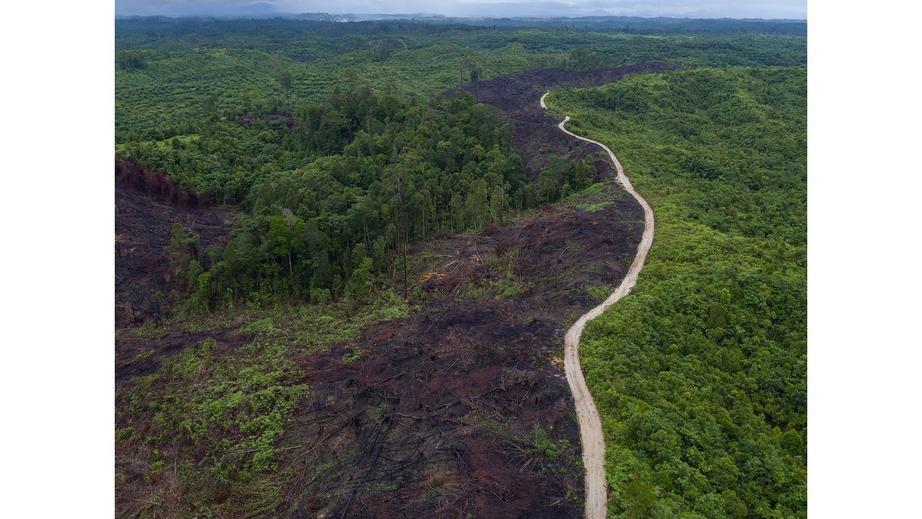
Land in Sumatra is cleared of tropical forest in anticipation of an unsanctioned oil-palm plantation. The 740 acres of felled trees were eventually burned and mulched for use as fertilizer.
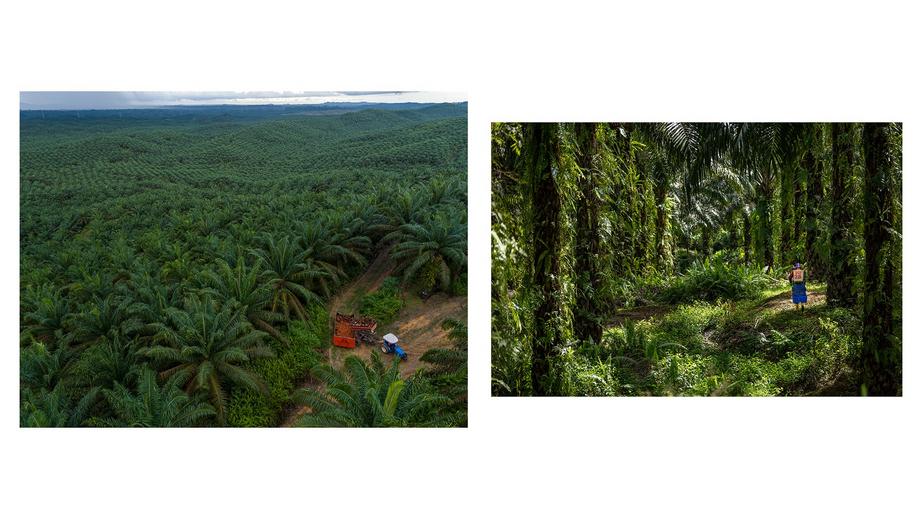
Left: Plantation workers load just-harvested clusters of fruit onto a tractor cart. Right: A farmhand sprays glyphosate, an herbicide, around the base of oil-palm trees to prevent the growth of weeds.
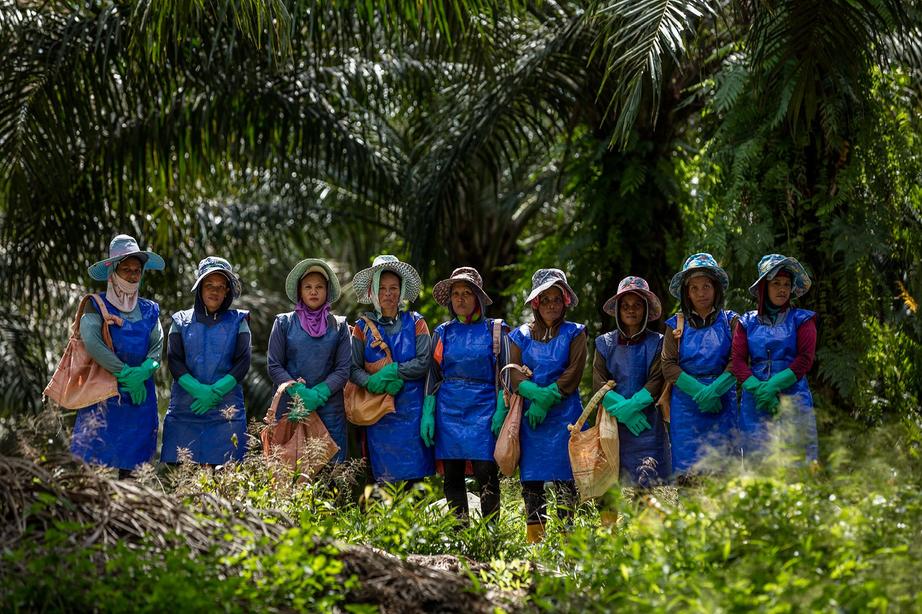
Female farm workers hold bags of Canadian potash fertilizer.
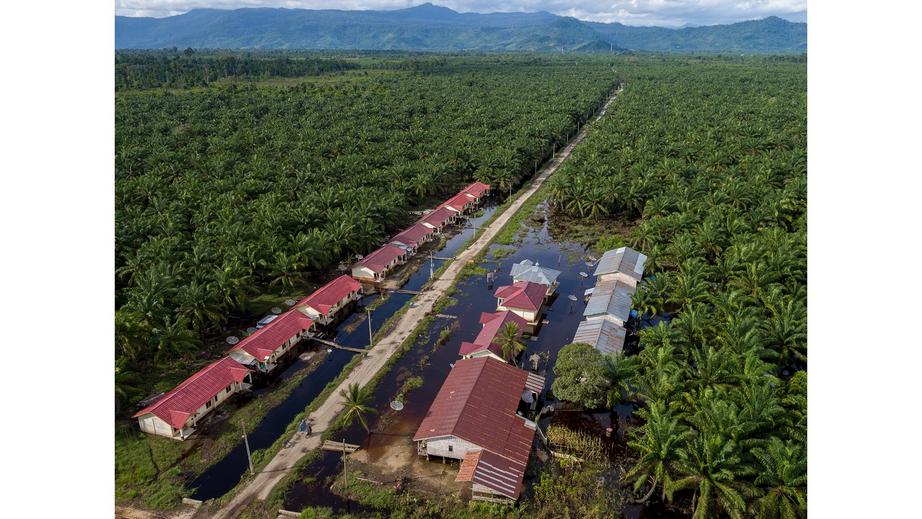
A drone photograph of plantation-worker dormitories in Sumatra.
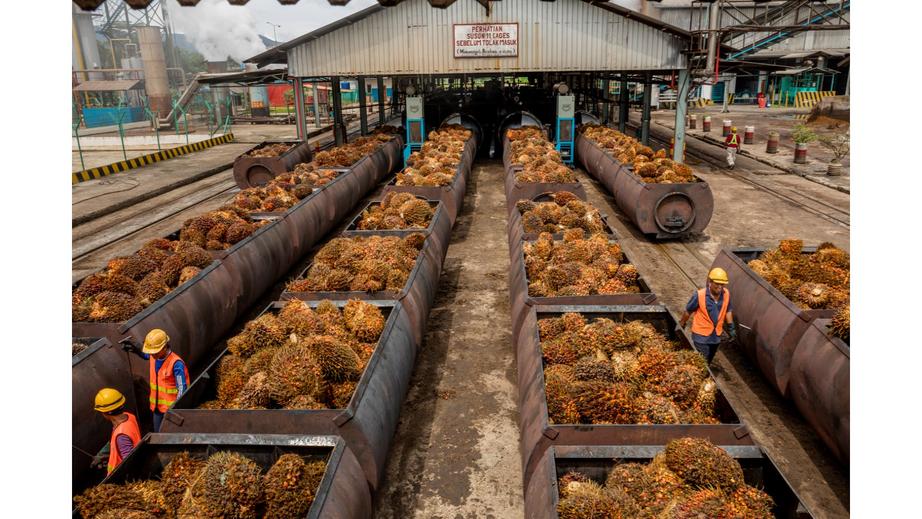
At a Borneo mill, fruit collected from nearby fields awaits processing.

Left: A mature stand of oil palms on Wilmar’s Sapi plantation, in Malaysian Borneo. Right: An old section of the plantation, just prior to replanting.
For the rest of this article please go to source link below.
Video can be accessed at source link below.

